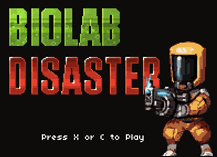Not more than 3 months after the original debuted, Adult Swim and Matt Thorson have released Give Up Robot 2. If you haven’t played the original, you might want to go do so right now. It’s a great game. They both are, actually.
One of the things that these games do really well is keep you playing, dead or alive. In this series, the second you die you’re back on your feet (or wheel) to try again. And when you’re alive, you don’t want to stop. Like many games these days, they’ve left behind the often archaic idea of “lives” carried over from quarter-hungry arcade machines. These games are about rising to the challenge, not about proving you can do so in an allotted number of tries. I like that, limited lives are lame. Alliteration and unlimited lives are awesome.
 For the cave-dwellers who haven’t played either game yet, the premise is pretty standard. You play as a robot with a grappling hook who has to make his way through a psychedelic arena of pits, traps and other dangers. The sequel delivers more of the same, with a few new additions such as switches, coins and new kinds of moving platforms and obstacles. And of course the charming Portal-esque computer is back to taunt you along the way. Though still 8bit-ish, the graphics are much cleaner and the robot moves a bit more adeptly; a welcomed improvement. Overall it’s not a huge departure from the original, which is a good thing because Give Up Robot was extraordinarily well received.
For the cave-dwellers who haven’t played either game yet, the premise is pretty standard. You play as a robot with a grappling hook who has to make his way through a psychedelic arena of pits, traps and other dangers. The sequel delivers more of the same, with a few new additions such as switches, coins and new kinds of moving platforms and obstacles. And of course the charming Portal-esque computer is back to taunt you along the way. Though still 8bit-ish, the graphics are much cleaner and the robot moves a bit more adeptly; a welcomed improvement. Overall it’s not a huge departure from the original, which is a good thing because Give Up Robot was extraordinarily well received.
 I feel like Matt did correctly what we all hoped Nintendo would do after Mario Kart 64… deliver the same basic engine with new levels and some new tricks. Instead Nintendo puked up Double Dash. What the fuck, Nintendo? If you haven’t played Give Up Robot or Give Up Robot 2, find some time at work to shut off and play these. You won’t regret it, unless you suck at games because these both give the concept of “Nintendo Hard” a run for its money. Good luck…
I feel like Matt did correctly what we all hoped Nintendo would do after Mario Kart 64… deliver the same basic engine with new levels and some new tricks. Instead Nintendo puked up Double Dash. What the fuck, Nintendo? If you haven’t played Give Up Robot or Give Up Robot 2, find some time at work to shut off and play these. You won’t regret it, unless you suck at games because these both give the concept of “Nintendo Hard” a run for its money. Good luck…


 Biolab Disaster isn’t the most exciting game I’ve ever played, far from it actually, but this isn’t a game review. The game is built entirely in HTML5, which in and of itself isn’t all that exciting either.
Biolab Disaster isn’t the most exciting game I’ve ever played, far from it actually, but this isn’t a game review. The game is built entirely in HTML5, which in and of itself isn’t all that exciting either.
 To the developers, I’ll say this: When you’re cooking up your next app, keep the words of Jurassic Park’s Ian Malcolm in mind. “…your scientists were so preoccupied with whether or not they could, they didn’t stop to think if they should.” Make apps that fill a need, innovate or do something better than an existing app. Flooding the store with dress-up games and soundboards just because we can will only leave us with: I told you so.
To the developers, I’ll say this: When you’re cooking up your next app, keep the words of Jurassic Park’s Ian Malcolm in mind. “…your scientists were so preoccupied with whether or not they could, they didn’t stop to think if they should.” Make apps that fill a need, innovate or do something better than an existing app. Flooding the store with dress-up games and soundboards just because we can will only leave us with: I told you so.